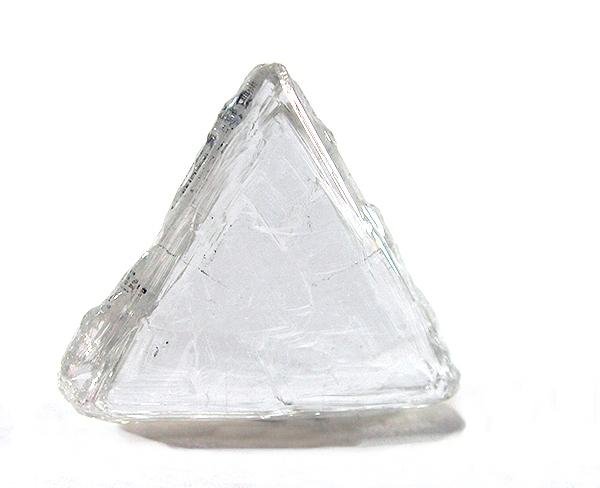It depends!
We’re not being evasive. It just really does depend on several factors. Lucky for you we’re diamond professionals, so we’re not going to leave it at that. Read on to find out more.
(Psst…if you want the short answer, scroll down to the bottom of this article!)
Why one carat?
It’s perhaps important to first consider why so many people want a 1-carat diamond. Diamonds come in all shapes and sizes and the majority of them don’t conveniently weigh a nice round carat. So what’s the big appeal?
Our theory, based on two decades in the diamond industry and an amateurish study of human nature, is this: Humans don’t like to have ‘bits’ of things. We’re designed to appreciate things in their entirety. We don’t like missing the start of our favourite TV shows. We object to being handed half a biscuit. We get very put out if we don’t get to finish a cup of tea.
It’s simple to see how this extends to diamonds. There’s something satisfyingly ‘complete’ about a one-carat diamond compared to a 0.85-carat diamond.
And why one carat, instead of two, or twelve? That’s easy. Carats aren’t cheap. Unless you’ve got a celebrity-sized budget, one-carat is complete enough for most of us.

Ah, but did you know?
It’s exactly because of the demand for exactly one-carat diamonds that they command higher prices. Opting for a 0.98-carat diamond instead of a 1-carat diamond, for example, could save you hundreds, if not, thousands of pounds.
Moving on…
One stone or many?
Watch any shopping channel or browse any catalogue, and you’re bound to come across a 6-carat diamond necklace or an 8-carat diamond ring at a truly unbelievable price. You might even start to think those 12-carat celebrity diamond engagement rings aren’t so hot anymore.
However, the reason those pieces of jewellery are so cheap is that they’re made up of lots and lots of tiny diamonds and what you’re being sold is the combined carat weight.
The truth is, tiny diamonds are a lot easier to come by than bigger diamonds, for the simple fact that it’s much harder to find large diamonds in the rough. A one-carat diamond ring with a single stone is a completely different kettle of fish from one with twenty or thirty stones (i.e. it’s better).

The Shape Factor
Does the shape of a diamond affect its price? Yeessssss, it does. However, there’s no simple formula. Often it’s simply a case of supply and demand, with the most popular shapes (currently Round Brilliant and Princess Cut) commanding higher prices. Then again, if a shape is markedly unpopular, the price might go up because fewer are made.
Yield is another factor. Some shapes require that more of the rough diamond is cut away (Round Brilliant, I’m looking at you) and that extra waste on the cutting room floor equals more cost. Other shapes, such as the slender Marquise, are much more obliging and allow the cutter to preserve more of the rough stone, which means the cost is lower.
So yes, the shape of a diamond can affect its price but not so much that you should worry about it. Indeed, there are other, much more important factors…
The Four C’s
I’m not going to bang on about the Four C’s massively. You either know about them or you don’t (in which case, read this).
The Four C’s are Cut, Colour, Clarity and Carat weight. For this article, it’s enough to know that the Four C’s determine the quality of a diamond and its quality - not shape, size, origin or celebrity endorsement – that ultimately determines the price of a one-carat diamond.
The bottom line? The better the quality, the more beautiful and valuable the diamond.



So how much DOES a 1-carat diamond cost?
Okay, so let’s get down to the nitty-gritty.
Here are two round brilliant 1-carat diamonds picked at random: one priced at the lower end of the scale and one way up there in the clouds where all the very expensive snobby diamonds hang out.
Diamond ‘A’
- Cut: Very Good
- Colour: G (has a faint colour tint)
- Clarity: SI2 (contains tiny inclusions visible to the naked eye)
Diamond ‘B’
- Cut: Excellent
- Colour: D (absolutely colourless)
- Clarity: FL (flawless)
There is a £10,185 price difference between these two diamonds. Yes, I said £10,185. (Remember, they both weigh one carat!) Diamond ‘A’ costs £2,700 and Diamond ‘B’ costs £12,885.
In the case of Diamond ‘B’, colour and clarity have the greatest influence on the price. Colourless, internally flawless diamonds are extremely rare. So rare that if we change just one of those grades – dropping the D Cut grade to an E, for example – then we see a significant drop-off in price:
Diamond ‘C’
- Cut: Excellent
- Colour: E
- Clarity: FL

So, how much SHOULD you pay for a one-carat diamond?
Well, for starters, you don’t have to pay £13,000+ for a quality 1-carat diamond (although you absolutely can if you want to!). Colourless is nice if you can get it, but an ‘F’ or ‘G’ colour-grade diamond will look colourless to the unaided eye and will knock several grand off the price (anything ‘H’ or higher is perfectly lovely).
The same goes for the other three of the Four C’s. The great thing about buying a diamond is there are so many variables – you can tweak until your heart and budget are content.
Buying a quality 1-carat diamond will cost you (approximately):
- Perfectly Flawless Diamond - £13,000
- Eye Clean White Diamond - £4,500
- Very High-Quality Lab Grown Diamond - £500
Expect to pay in the low thousands for a mined diamond, if it's any lower, I’d ask serious questions about the quality and check the certificate and around £1000 for a stunning 1-carat lab-grown diamond



 English
English




